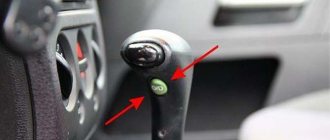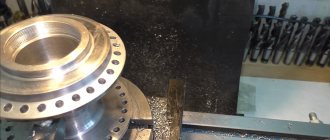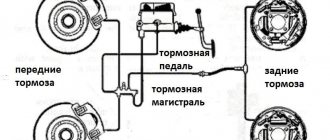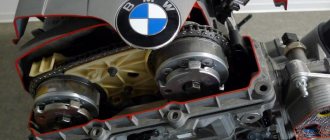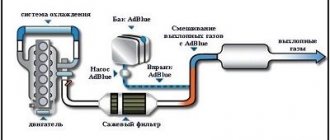Dear readers, today we’ll talk about what an automatic transmission brake band is. Automatic manufacturers are working to improve gearboxes and the comfort of the car owner. One of the purposes of a brake band is to reduce shock when changing gears. We'll talk about this further.
What do you know about the brake band? Write in the comments.
Purpose of the brake band
Many novice drivers ask me why a brake band is needed in an automatic transmission. The band brake secures the planetary mechanism of the automatic transmission. Self-clamping occurs. And then the tape relaxes. Thanks to this action, the car owner does not feel jolts when changing gears when one gear shifts to another.
Attention! If the transmission limit in the automatic transmission is adjusted incorrectly, the driver will feel a strong jerk when switching to first gear and reverse gear. Prolonged incorrect operation of the brake band will lead to failure of the engine and automatic transmission.
Do you know how the TL automatic transmission works and how to set it up? Write in the comments.
First, let's see where it is located.
- one end of the tape is connected to the machine body;
- the other end is with the servo piston.
The entire clamping procedure is carried out by the pressure force created by the transmission fluid.
- The planetary gear drum is locked when clamped. The latter occurs due to the servo piston. He is pushed by the oil and he clamps the tape.
- The planetary gear stops for a split second.
- The lubricating fluid enters the shutdown cavity. Next, release occurs, during which the drum begins to move in the other direction relative to the braking effect.
- At the same time, gear changes occur. Since the parts of the planetary gear, which restrained the brake mechanism, rotate in the other direction.
- The piston returns to its permanent location and the brake band is released. This process happens in a split second.
Read
Design and principle of operation of an automatic transmission torque converter
The TL in an automatic transmission is small in size and narrow in width, but is capable of holding mechanisms several times larger than it. Do you know what types of TL automatic transmissions exist?
Operating principle of the system
The ends of the brake band are secured:
- motionless on the automatic transmission housing;
- on the movable servo piston.
Schematic illustration of the locking mechanism
When transmission fluid is supplied to the drive activation cavity, the piston begins to move under the influence of oil pressure. After clamping the brake band, the elements of the planetary gear are fixed. The blocking continues for the required time.
As soon as it becomes necessary to unlock the planetary system drum, oil begins to flow into the servo drive shut-off cavity. After equalizing the pressure in the two circuits, the brake band begins to weaken its impact. The return spring acts on the piston, and it takes its original position. The brake band goes into a free state.
Types of brake bands
Did you know that there are three types of band brakes. These types are given in the table, as well as their characteristics.
| Type LT | Characteristic |
| LAT 2 | This tape will operate at a pressure of no more than 5 MPa. Withstands friction temperatures up to 350 degrees. Used in tropical countries. |
| EM-K | This tape will operate at a pressure of no more than 3 MPa. Withstands friction temperatures up to 250 degrees. Used in countries with dry climates. |
| EM-1 | This type is used in various countries. Temperature characteristics – from – 60 to + 250. This is a rolled type of tape. |
The band brake for automatic transmission consists of elastic strips. They are manufactured at the manufacturing plant and undergo rigorous testing. Such tests include:
- tensile test. Strength and reliability are determined;
- flexibility test;
- to counteract abrasion.
Only after passing all these tests “excellently” can the band brake be allowed to be installed on an automatic machine. But no matter how durable it is or made of a flexible and indelible metal alloy, if the automatic transmission is used incorrectly, the vehicle will quickly become unusable.
see also
Comments 171
I have a Cefir A33. I tried your method. put it on a small hill. Apparently it hasn’t been regulated even once for 20 years. everything is rusty. Somehow unscrew the lock nut. Holding a 30mm Torx inserted into the spark plug wrench, the long tube was unscrewed along the stud and the locknut was unscrewed. then using this locknut, since it sits tightly on the stud, I screwed the stud inwards by six! six turns. and didn’t feel any pressure. I put the netralka on and released the handbrake. the car rolled as if the belt was not stopping the drum. I'm afraid to pull more than 6 revolutions. I unscrewed the pin back to 4. I locked it. I went to test it. the kicks with the original resistor became much less noticeable, but with the resistor in the 18th there was a slight kick only from 2 to 3. And switching 1 and 2 only in the direction of the arrow began to be determined without stupidity, straight away without a kick. I went for a ride and had a blast. next morning went for a day. and everything returned to normal. not in such a severe form as it was, but less noticeably. but it still kicks again, although weaker, and the box seems to have somehow become more responsive or something. will be an exhalation, I’ll try to screw in another half turn)
oh yeah. mileage I bought it at 210 thousand. and the chain was noisy, but as you know, it starts to hum after 300 thousand. therefore, right now the mileage is under 400 thousand), respectively, if Lyuli with a mileage of 150 thousand writes that he screwed in 3.5 and turned out 2.5 turns, count 1 every 120-170 thousand, so then I just need to screw in the collar


